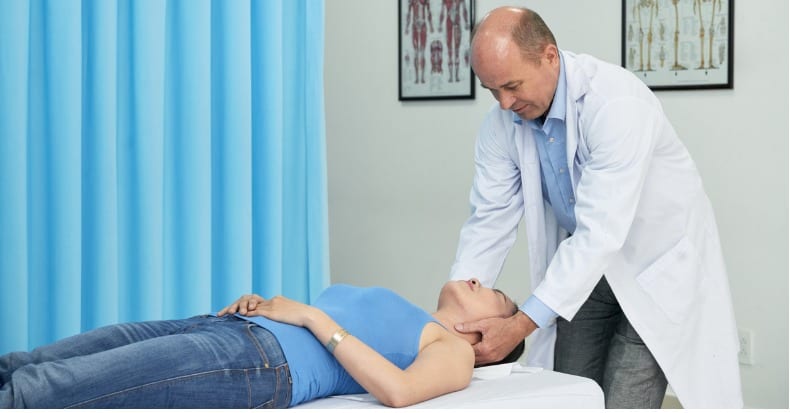Doctors of chiropractic often approach neck pain with manual therapy as the primary form of treatment. However, there are several types of manual therapy, including high velocity, low amplitude (HVLA) thrust manipulation; mobilization; and/or soft tissue techniques. Is one type of manual therapy superior when it comes to managing neck pain? What does the research show? A 2017 systematic review of 23 randomized controlled trials compared various manual therapy techniques on their own (or combined), with or without the addition of specific exercise recommendations.
For acute (recent onset) to sub-acute neck pain, the review concluded:
- High-velocity, low-amplitude thrust manipulation combined with exercise resulted in better outcomes when treatment was applied to the cervical vs. the thoracic spine.
- High-velocity, low-amplitude thrust manipulation combined with soft tissue techniques and exercise applied to both the neck and mid-back led to better outcomes than when soft tissue techniques plus exercise only targeted the neck.
For chronic neck pain, the data show:
- Both HVLA thrust manipulation and soft tissue techniques in addition to exercise are more effective than either manual therapy or exercise alone for improving pain and function.
- Thrust manipulation applied to the neck and mid-back was more effective for improving neck mobility than mobilization.
- Mobilization and soft tissue techniques are both more effective than no treatment for improving pain and disability.
This systematic review favors all types of manual therapies for the management of all stages of neck pain (acute, sub-acute, chronic), especially when combined with exercise. The data also suggests the incorporating treatment of the mid-back may lead to better outcomes.
While manual therapies in general can benefit the neck pain patient, the approach a doctor of chiropractic takes will depend on the patient’s unique case (based on patient history and exam findings) and preferences. For example, a patient may prefer a gentle, low force technique or their chiropractor may use a combination of manual therapy techniques. Additionally, care may also include nutritional/dietary recommendations or physical modalities.



